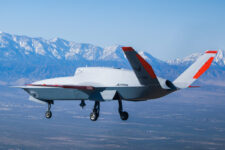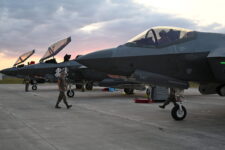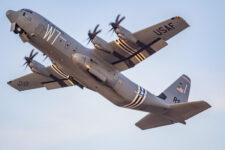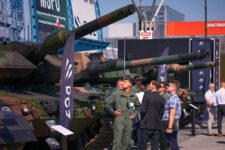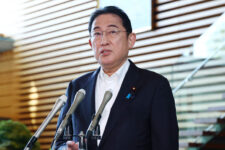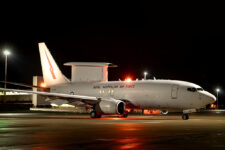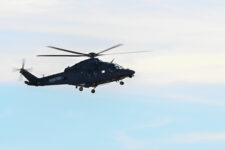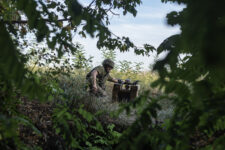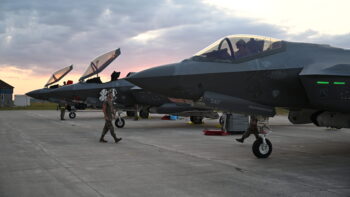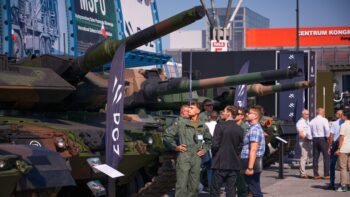
A Pratt & Whitney F135 engine hangs in Arnold Engineering Development Complex (AEDC) Sea Level Test Cell 3 at Arnold Air Force Base, Tenn., between test runs Sept. 2, 2021. (U.S. Air Force photo by Jill Pickett)
FARNBOROUGH 2024 — Pratt & Whitney’s efforts to incorporate additively manufactured parts into its products now extends to the F135 engine, the powerplant of the F-35 Joint Strike Fighter, according to a company executive.
“We are working on quite a bit of repair development,” Jill Albertelli, Pratt’s president of military engines, exclusively told Breaking Defense in an interview over the weekend. “Things like additive [manufacturing] can also help in repair development activity, and we have a plan” to incorporate the technology into the F135, she said.
According to a Pratt statement, the company in 2018 began work to additively manufacture the engine’s turbine exhaust case trailing edge box, which directs exhaust gasses. The technique departs from the standard method called hydroforming, Pratt said, where high-pressure fluid is used to form metal plates.
Additive manufacturing, or 3D-printing, works by fusing metal powders together one thin layer at a time. Guided by a digital design, the technique can offer improvements like faster production speed, lower cost and simplifying a system by reducing the number of parts necessary, as opposed to traditional methods that require carving out numerous components from larger pieces of existing material. 3D-printed parts can also reduce weight, an advantage for aircraft.
Introducing new material into any design requires additional certification, Albertelli said.
Besides the F135, Pratt is also looking to harness additive manufacturing on simpler engines like the TJ150 with an eye toward opportunities like the Air Force’s Collaborative Combat Aircraft (CCA) initiative. Pratt has been working to fully manufacture the powerplant using additive techniques, and has so far reduced the number of engine parts from 50 to “less than five,” according to Albertelli.
“As the US Air Force did an assessment on the defense industrial base, additive manufacturing is something that they highlighted significantly,” to help reduce supply chain burdens, Albertelli said in a Monday briefing at the Farnborough air show. The technology could aid the service’s CCA effort that seeks to mass produce cheap drones.
RELATED: GE and Kratos unveil new engine ‘family,’ aimed at cruise missiles, CCA
A newer configuration of the TJ150, which includes additively manufactured rotating parts, will begin testing in 2025, which will be followed by altitude and flight testing, Albertelli said.
Pratt is in discussion with customers about the engine, and underlying additive technology, for platforms like CCA, Albertelli added. Between domestic and international demand, orders for platforms like CCA drones, and attendant propulsion systems, could “definitely” reach into the thousands, she said.
